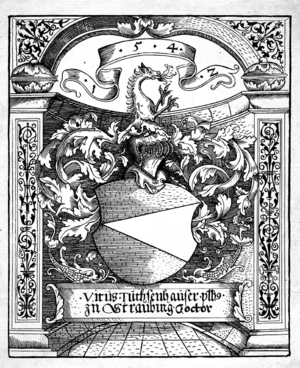User:Pedro Sá Couto/Exlibris: Difference between revisions
No edit summary |
|||
| Line 1: | Line 1: | ||
=''Ex libris''= | =''Ex libris''= | ||
==WHY AND WHEREFORE== | |||
In days when a book was a valu- able possession book-plates often carried a warning to the borrower such as the one used by John Hughes, a German of the 17th century, which, translated, read: | |||
<small> | |||
"By him who bought me for his own, | |||
I'm lent for reading, leaf by leaf. | |||
If honest you'll return the loan, | |||
If you retain me, you're a thief." | |||
<small> | |||
Book-plates were used also to record the fact of a gift and the name of the maker of it, especially in the case where the recipient was an institu- tion. The early book-plate of Harvard College was large, most elaborate and exquisitely design | |||
[[File:exlibris_python.png|300px|]] | [[File:exlibris_python.png|300px|]] | ||
Revision as of 17:08, 6 November 2019
Ex libris
WHY AND WHEREFORE
In days when a book was a valu- able possession book-plates often carried a warning to the borrower such as the one used by John Hughes, a German of the 17th century, which, translated, read:
"By him who bought me for his own, I'm lent for reading, leaf by leaf. If honest you'll return the loan, If you retain me, you're a thief."
Book-plates were used also to record the fact of a gift and the name of the maker of it, especially in the case where the recipient was an institu- tion. The early book-plate of Harvard College was large, most elaborate and exquisitely design

